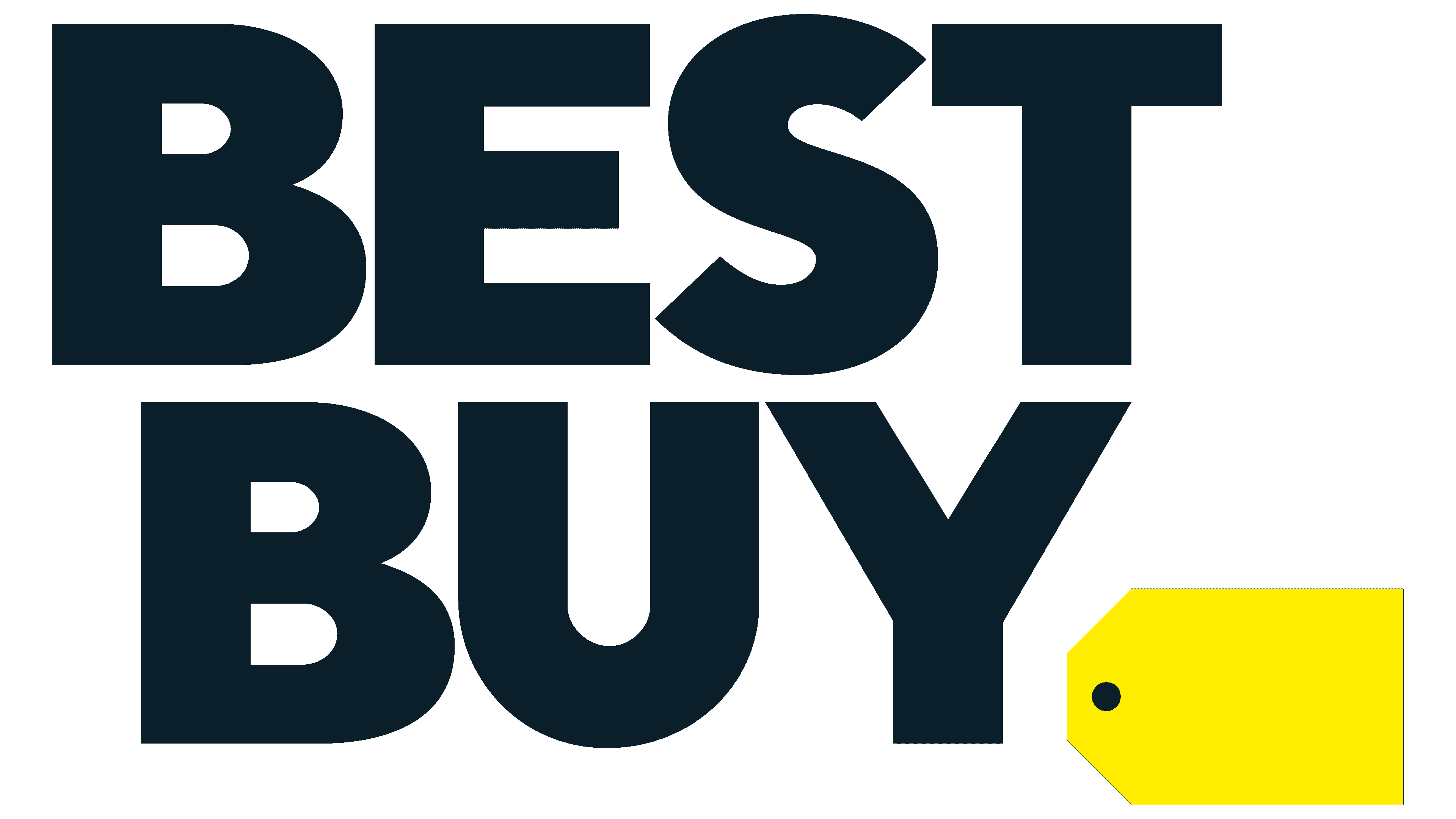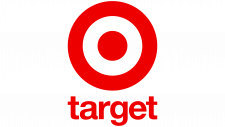Best Buy Logo
Best Buy, a renowned electronics retailer, specializes in selling a wide array of consumer electronics, appliances, and related services. Headquartered in Richfield, Minnesota, it operates extensively within the United States, Canada, and Mexico. Best Buy offers products both online and across its vast network of stores. The company is public and traded on the NYSE as BBY, with institutional and individual investors owning its shares. It stands as a go-to destination for technology and electronic enthusiasts, providing diverse products and solutions to meet consumer needs.
Meaning and history
Best Buy, originating as “Sound of Music” in 1966 by Richard M. Schulze, initially focused on home and car stereo equipment. Schulze, an astute businessman, transformed it into Best Buy Co., Inc in 1983, with a widened inventory, including appliances and VCRs. It pioneered the “superstore” concept in 1989, offering an expansive selection of goods, which was revolutionary. The company went public in 1985, and its ownership is now dispersed among various shareholders.
Over the years, Best Buy has undergone significant transformations, morphing its product lines and services to accommodate the evolving consumer needs and technology trends. It was one of the first companies to champion the e-commerce wave, establishing its online presence early on.
With the advent of the digital age, Best Buy transitioned its focus towards a diverse array of electronics, including computers, smartphones, and smart home products, becoming a one-stop destination for technology enthusiasts. The company, while maintaining its stronghold in North America, continually adapts its strategies, embracing innovations to stay relevant in the dynamic retail landscape.
Throughout its history, Best Buy has faced challenges, including market competitions and changing consumer preferences, but its ability to adapt and innovate has ensured its sustained growth and prominence in the electronics retail sector. The company’s shares are traded on the NYSE, allowing a broad spectrum of investors to have ownership stakes. The strategic changes and constant evolution have kept Best Buy at the forefront of the consumer electronics retail industry, catering to millions of customers across its primary markets.
1966 – 1972
The first logo presents the text “SOUND OF MUSIC” in a bold, dynamic font that mimics the waves and vibrations of sound. The central “O” in “OF” doubles as a vinyl record, reinforcing the theme of music. The design has a retro feel, indicative of the era when vinyl was the primary medium for music distribution. The black and white color scheme adds a classic touch, suggesting a focus on the purity of sound and the timeless quality of music.
1972 – 1980
The logo features the words “SOUND OF MUSIC” in a bold, uppercase sans-serif typeface. The design is stark in its simplicity, with a monochromatic color scheme that conveys a classic and timeless feel. A geometric shape reminiscent of a record or a disc appears to the left of the text, partially overlapping with the first letter. This symbol enhances the association with audio and music, and the circular motion implied by the design suggests dynamism and sound waves. The overall effect is one of stability and established identity, likely representing the store’s focus on audio products and services.
1978 – 1980
The logo maintains the same name, “SOUND OF MUSIC,” but with the addition of “AUDIO STORES” below in a smaller font. The design retains the same geometric shape and overall layout as the previous iteration. However, the typeface is less refined, with a grittier, more textured look. The edges of the letters and the circular graphic are rougher, suggesting a more grassroots or analog quality, possibly indicative of the era’s technology. The lettering style gives a vintage feel, harking back to a time when audio stores were a primary source of music and sound equipment.
1980 – 1984
Initially hitting the market under the moniker “Sound of Music,” the retailer specialized in stereo equipment. The inaugural logo succinctly represented this focus; it was conceptualized as a yellow and black circle, reminiscent of a speaker. The brand name, “SOUND OF MUSIC,” was emblazoned across the upper half, with distinctively extended strokes on the letters “U,” “F,” and “M” to create an asymmetric and visually engaging effect. The unique design reflected the essence of the brand’s specialty in music and sound equipment during its early phase in the retail market, symbolizing its commitment to delivering high-quality audio products. The contrasting colors and stylized text served to create a memorable and distinctive image, helping to establish the brand’s identity in a competitive market landscape. The innovative and creative approach to the logo design set the tone for the company’s future endeavors and adaptations in the evolving retail scene, paving the way for its subsequent rebranding and expansion into diverse electronics segments.
1984 – 1986
Post broadening its product spectrum, the firm underwent a name transformation to Best Buy Co. Superstores. This evolution was mirrored in its emblematic representation. The original textual elements were substituted, and the circle was encapsulated within a square, characterized by its black hue interspersed with yellow horizontal bands. Concurrently, a division was implemented in the naming representation; the initial trio of words was encapsulated within the circle, and the concluding word was positioned at the square’s base. The diversified logo symbolized a significant shift in the company’s identity and market presence, reflecting its comprehensive offerings beyond its initial focus. The sophisticated and structured design aimed to resonate with a broader consumer base, aligning with the expanded vision and scope of the company in the dynamic retail landscape. The emblem’s enhanced complexity marked the brand’s evolution and its commitment to catering to varied consumer needs in the electronics retail sector.
1986
This image is a logo that reads “BEST BUY” with the tagline “Superstores” written underneath in a script-like typeface. The “BEST BUY” is in uppercase letters, bold, and features a slight italic slant, giving the impression of forward movement and progressiveness. The “Superstores” tagline suggests a broadening of the business scope beyond just audio products. The font of the tagline contrasts with the main text, providing a touch of elegance and perhaps implying a more personalized shopping experience. The color palette is monochromatic, which could denote the brand’s straightforward approach to business.
1986 – 1988
The logo represents a modernized version of the previous logo, with “BEST BUY” in a bold, black, sans-serif typeface that exudes confidence and strength. The word “Superstores” is also updated, now in a slanted, energetic red font that underscores the brand’s dynamic and contemporary nature. The red color is striking and is often associated with energy, which may reflect the company’s mission to be at the forefront of retail and consumer technology. This logo suggests an emphasis on being the best in the market, with an energetic and powerful presence in the superstore retail space.
1988 – 1989
In 1984, aligning with its evolving brand identity, the retail entity rebranded itself as Best Buy Superstores and promptly modernized its logo to complement the freshly minted image. A yellow rectangular form served as the foundational element for the renewed design. Situated above was the term “BEST BUY,” delineated in a bold black font, while beneath, sandwiched between two slender lines, the crimson inscription “Superstores” was placed, rendered in a slanted script mimicking cursive handwriting. This revamped aesthetic was instrumental in projecting the company’s expansion and diversified approach, indicating a broader spectrum of offerings and an enhanced focus on customer-centric solutions in the competitive retail environment. The fusion of vivid colors and distinctive typography underscored the brand’s commitment to quality and service, encapsulating its dynamic spirit and relentless pursuit of retail excellence. The meticulous attention to detail in the design elements conveyed the brand’s dedication to innovation and its adaptability to the ever-evolving consumer preferences and market trends.
1989 – 2018
Upon abbreviating its name to Best Buy, the corporation adopted its emblematic insignia, a yellow tag featuring two clipped corners and a petite round aperture. This transformative logo embodied a pivotal shift in corporate philosophy; the enterprise started emphasizing contemporary aesthetics and exemplary customer service. This redefined visual identity was not just a symbol but a manifestation of the company’s renewed commitment to delivering superior value and experience to its consumers. The vibrant yellow of the tag was synonymous with the company’s energetic approach and forward-thinking, aiming to stand out in the competitive market by fostering a unique brand personality and enhancing customer interactions. The innovative design elements within the logo reflected the company’s dedication to maintaining a stylish and modern image, harmonizing with its mission to exceed customer expectations through unwavering quality and service.
2018 – Today
In 2018, the existing emblem was conceived for the retail chain, where prominent black typography spelling “BEST BUY” assumed a central role. The emblematic tag has been minimized and repositioned to the bottom right corner. Its retention signifies a reluctance to relinquish such a defining symbol; however, the alteration in scale denotes a drive to refurbish the brand’s identity. The overhaul was indicative of a balancing act between maintaining legacy and embracing evolution, reflecting an adaptive strategy and a visionary approach in the evolving retail landscape. The transformative design exemplifies the company’s commitment to staying relevant and attuned to contemporary branding trends, ensuring the enduring resonance of the brand with its diverse consumer base. The modification, subtle yet significant, underscores the importance of evolving brand identity in aligning with modern aesthetic sensibilities and consumer expectations, symbolizing progressiveness and a forward-thinking mindset.






















